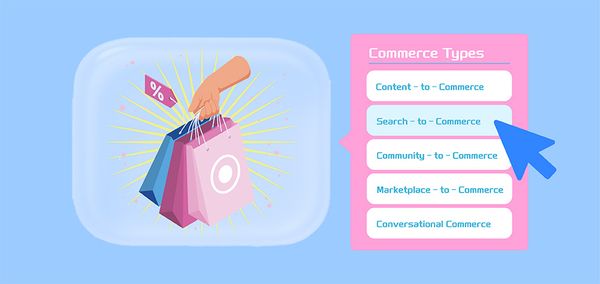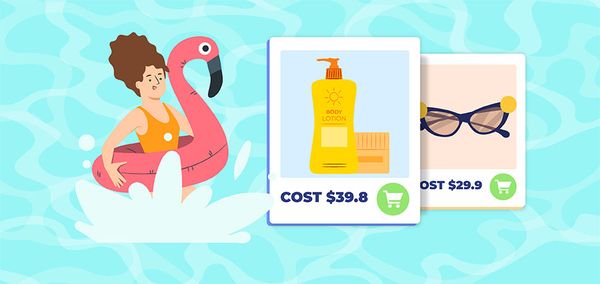What Is Customer Experience Management – A Comprehensive Guide

Your consumer travels a long path before completing a purchase, starting with a visit to your website or reading an email. Don't you wish you could consistently communicate with them at each stop?
Fortunately, customer experience management (CXM) makes it feasible.
You can maintain a streamlined customer experience to keep leads engaged and increase the likelihood of conversion with the appropriate CXM tools and methods. Most client interactions are scattered across many channels; thus, CXM is more complex.
In this post, we'll go through the main ideas of CXM, its advantages, typical tactics, and how to choose the best tools to get started.
What Is Customer Experience
Customer experience is the sum of a customer's interactions with your business. This includes using your website, participating in marketing emails, completing a purchase, and other activities.
There is a lot to discuss here. However, the majority of features of the customer experience may be divided into three broad groups.
Customer engagement: How involved are your clients with your business? Opening marketing emails, connecting on social media, and completing a purchase are examples of how engagement may manifest. Even one-time clients interact with companies in a variety of ways. We'll see that encouraging and monitoring customer participation adequately is one of CMX’s key objectives.
Satisfaction: Are your consumers happy with their experience or not? Even if a consumer engages with you or buys anything, they may not always be satisfied with their purchase, and if they aren't, they're not likely to come back. Although it's not always easy to maintain and measure customer happiness (we'll explore this later), that is the primary objective of CXM.
Experience: What was your entire experience like? The experience itself is what drives both consumer happiness and engagement. Although it may seem apparent, it's easy to lose sight of the broader picture when you're intensely focused on writing the ideal email or improving your online business.
Although engagement, contentment, and experience are often combined to form customer experience, this combination may vary significantly amongst businesses, markets, and clients. Every client experience is unique, and each encounter may need a distinct strategy and management technique.
What Is Customer Experience Management (CXM)
Although it may seem ambiguous, there's a valid reason—CXM is a vast topic. In the following parts, we'll cover the fundamentals of customer experience, how to manage it, why it's significant, and how it differs from customer relationship management.
Managing Customer Experience
Controlling customer experience is necessary. However, how do we handle it?
Present CXM. Companies may now monitor leads and customers at every step of the customer journey using various tactics and software solutions. By doing this, companies can provide each consumer with a customized experience, increasing customer happiness and sales.
Even if more significant sales and customer happiness are excellent outcomes of implementing CXM, they are not the sole reasons for its significance.
Why Is Customer Experience Management Important
For a variety of reasons, investing in your client experience is crucial.
CXM may help you fine-tune your company based on the requirements and values it helps you discover beyond just boosting sales and developing a solid reputation. With content customers and staff, the rest of your firm will prosper.
- Gives you a better insight into your clients: By following them throughout their customer journey, you may better understand a client's behaviors, demands, and prospective categories based on age, demography, and other factors.
- It's simpler to keep loyal consumers: You may increase customer retention rates and ROI by utilizing CXM to provide each client with a customized experience.
- Provides insightful client feedback: Even if you poll your clients, it might be challenging to determine precisely what they like and dislike. You may get "covert" customer feedback by directly watching your customers' behavior by recording their complete experience using CXM.
- Gives you the ability to enhance goods and services: You may also improve your goods and services based on what is currently working well if you have a more excellent grasp of client demands and habits.
- Aids in determining the effectiveness of efforts: CXM enables you to oversee consumer behavior so that you can evaluate the success of marketing campaigns and other activities first-hand.
- Satisfied customers are more inclined to suggest your company: Happy customers result from a positive customer experience. As a result, these content customers are more willing to spread the news about you, which is one of the most effective strategies to get new clients.
- Continues to have a competitive edge: You're already ahead of the competition by implementing a straightforward CXM approach. As you improve customer satisfaction and lower customer turnover over time, you'll earn an even greater edge.
Customer Experience vs. Customer Management (CXM vs. CRM)
You may also be familiar with customer relationship management, or CRM. Even the terms CXM and it have been used interchangeably at times.
But how do they differ?
| Get Started Now to Grow Your Online Business with the Best AliExpress Dropshipping Tool - DSers! |
Although CXM and CRM aim to enhance client connections, how they do so differs somewhat. In contrast to CRM, which focuses only on the statistics behind consumer interactions (such as click-through rates), CXM leverages this data to create a more comprehensive, qualitative approach distributed across various channels.
Here is how this discrepancy often manifests itself.
- While CXM focuses on the business's value to the customer, CRM emphasizes the customer's worth to the organization.
- While CXM focuses on qualitative consumer insights, CRM focuses on quantitative insights.
- While CXM focuses on external operations like client interaction, CRM primarily focuses on enhancing internal processes.
- CXM uses CRM data to foresee client demands and provide immediate answers.
5 Good CXM Qualities
You must understand what creates an outstanding client experience before creating and managing one.
Even if the term "great" is arbitrary, most excellent customer experiences have some traits in common. Some of them are obvious, yet more often than one would imagine, they are glossed over.
Do these qualities describe your current client experience?
1. Meets client requirements
Customer needs should come first in the customer experience. Your primary focus should always be attending to pertinent client demands, making specific sites simple to access, or informing customers when their preferred things are on sale.
However, how can you know what your consumers need? It typically comes down to trial and error—if not a little intuition—even if CRM and CXM technologies may provide helpful insight. Depending on what's customary in your business, you'll often find original solutions.
Delivering meaningful customer experiences is ultimately necessary to satisfy consumer demands. We'll discover later that to achieve this; you need to comprehend your consumer and the stages of their customer journey.
2. Reliable and accessible
Particularly when it comes to the customer experience, consistency is crucial. Maintaining the experience over time is vital since many buyers may visit your website or marketing materials many times before making a purchase.
For keeping clients, consistency and availability are very crucial. When a consumer is satisfied enough to make a purchase, getting them to return and make another asset is not tricky. They could decide against purchasing if they return to an entirely different (or absent) client experience.
3. Establishes credibility and trust
More than ever, customers desire authenticity and trust. These characteristics have to be ingrained in your client experience as a consequence.
Losing a customer's confidence is incredibly simple and nearly usually irreversible. A terrible landing page, slipping in hidden costs, sending out less-than-transparent marketing materials, or providing subpar results are all simple ways to lose customers' confidence. Companies should strive to go above and beyond what customers anticipate, even if it means being entirely honest.
4. Favors profit above customer delight
In addition to prioritizing a positive experience above profit, promoting trust and sincerity is crucial. For instance, while browsing a website, many company consumers don't like the constant barrage of pop-up advertisements and intrusive page navigation.
Even if giving up some of the less ethical "tricks" for improving conversions can cause a small short-term drop in income, the long-term advantages to customer happiness will eventually increase your success.
5. Keep the human in mind
Remembering the human is the key to almost all of these ideas.
Contrary to what your CRM software may claim, your clients are more than simply a collection of data. They are individuals with desires, needs, interests, and objectives. You can pinpoint these issues and begin providing personalized—or, dare we say, humanized—customer experiences with a robust CXM strategy.
5 Basic CXM Strategies
So now that you know what Customer Experience Management is, let’s understand what should be the best strategies for it:
Even though each management plan is unique, taking the following steps will put you on the right track. While your approach to each phase may change based on your consumers, aiming to provide unique, genuine experiences will always produce fantastic outcomes.
1. Get to know your target audience
The foundation of every effective CXM strategy is having a solid understanding of your customer’s requirements and habits. Delivering the appropriate experiences will depend on your ability to ascertain what matters to them.
For this phase, CX and CRM data are beneficial. You may create client profiles with the correct data and carry out consumer segmentation based on factors like age, hobbies, spending patterns, etc...…
2. Make a map of the client’s journey
Making a customer experience map is the next step after understanding your consumer.
This map’s goal, often referred to as a customer journey or lifecycle, is to identify essential customer touchpoints and predict consumer behaviors based on their (assumed) requirements. Remember that a customer journey map isn't static and that not every consumer will experience the same path. In any event, as you gather customer input over time, you'll be able to improve the overall customer experience.
The stages that most client journeys include are as follows:
- Research: A possible client learns about the business via advertisements, search engines, etc.
- Comparison: The prospective client compares the business and others providing comparable goods or services. Cost, user opinions, and brand reputation might all be used as comparison criteria.
- Purchase: The prospective consumer becomes one. The moment a consumer makes a purchase, a long-term customer experience begins.
- Support: The consumer may contact support personnel to troubleshoot their purchase. Even the most devoted clients may be easily lost due to poor customer service resources.
3. Recognize the emotional ties
Strong, lasting consumer experiences depend on emotional connections. You may begin modifying your brand to appeal to your client’s emotions by recognizing those feelings.
For instance, the previous example's Happy Pup Dog Treats may appeal to their customers' affection for their pets. Happy Pup's customer experience may include communicating the quality of their ingredients and shared love of dogs since these feelings are likely to have the desire to offer their pups the highest-quality treats.
4. Obtain consumer input, then modify
Receiving and adjusting to consumer input is one of the essential advantages of CXM. Doing this will steadily improve your ability to serve customers and provide even more excellent outcomes.
However, feedback can be more complex. Utilize customer feedback from CRM and CX data to determine what is and isn't working.
5. Selecting a platform for customer experience management
Although you may be able to install CXM with your current tools, employing dedicated CXM software makes the process much simpler. It may be challenging to decide which tool to use since there are so many options, and what works for one company might not work for another.
When selecting your new customer experience management platform, consider the following questions.
Does it integrate with the tools and processes you already use?
If you're considering using CXM solutions, you presumably already use CX, CRM, or other marketing-related technologies. While most CXM tools won't work with everything, the tool you choose should, at the very least, work with your critical applications to simplify installation.
Are cross-channel consumer journeys a possibility?
Customer journeys traverse several platforms and channels, and your CXM solutions should be able to keep up with them. Make sure the tool you choose can assist you in planning and changing every aspect of your customer experience, from email marketing to support resources, as an extension of integration.
Conclusion
Today, customer experience is a crucial differentiation. Customers want improved customer service, a better customer experience, and high-quality items. A better customer experience increases customer loyalty, attracts more clients, and promotes more robust company expansion.
Customer experience is the sum of a customer's interactions with your business. This includes naturally using your website, participating in marketing emails, completing a purchase, and other activities. Many businesses leverage advanced technologies and tools, commonly referred to as customer experience software, to enhance and streamline these interactions.













 Company
Company
 Why Choose DSers
Why Choose DSers
 Blog
Blog
 Help Center
Help Center




 Live Chat
Live Chat